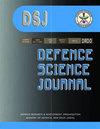Congestion Prediction in Internet of Things Network using Temporal Convolutional Network A Centralized Approach
IF 0.8
4区 工程技术
Q3 MULTIDISCIPLINARY SCIENCES
引用次数: 1
Abstract
The unprecedented ballooning of network traffic flow, specifically, Internet of Things (IoT) network traffic, has big stressed of congestion on todays Internet. Non-recurring network traffic flow may be caused by temporary disruptions, such as packet drop, poor quality of services, delay, etc. Hence, the network traffic flow estimation is important in IoT networks to predict congestion. As the data in IoT networks is collected from a large number of diversified devices which have unlike format of data and also manifest complex correlations, so the generated data is heterogeneous and nonlinear in nature. Conventional machine learning approaches unable to deal with nonlinear datasets and suffer from misclassification of real network traffic due to overfitting. Therefore, it also becomes really hard for conventional machine learning tools like shallow neural networks to predict the congestion accurately. Accuracy of congestion prediction algorithms play an important role to control the congestion by regulating the send rate of the source. Various deeplearning methods (LSTM, CNN, GRU, etc.) are considered in designing network traffic flow predictors, which have shown promising results. In this work, we propose a novel congestion predictor for IoT, that uses Temporal Convolutional Network (TCN). Furthermore, we use Taguchi method to optimize the TCN model that reduces the number of runs of the experiments. We compare TCN with other four deep learning-based models concerning Mean Absolute Error (MAE) and Mean Relative Error (MRE). The experimental results show that TCN based deep learning framework achieves improved performance with 95.52% accuracy in predicting network congestion. Further, we design the Home IoT network testbed to capture the real network traffic flows as no standard dataset is available.基于时间卷积网络的物联网拥塞预测——一种集中式方法
网络流量,特别是物联网(IoT)网络流量的空前膨胀,给当今的互联网带来了巨大的拥堵压力。非经常性网络流量可能是由临时中断引起的,如数据包丢失、服务质量差、延迟等。因此,网络流量估计在物联网网络中预测拥塞非常重要。由于物联网网络中的数据是从大量不同的设备中收集的,这些设备具有不同的数据格式,也表现出复杂的相关性,因此生成的数据本质上是异构和非线性的。传统的机器学习方法无法处理非线性数据集,并且由于过拟合而导致实际网络流量的错误分类。因此,像浅层神经网络这样的传统机器学习工具也很难准确预测拥塞。拥塞预测算法的准确性通过调节源的发送速率来控制拥塞起着重要作用。在设计网络流量预测因子时,考虑了各种深度学习方法(LSTM、CNN、GRU等),取得了良好的效果。在这项工作中,我们提出了一种新的物联网拥塞预测器,该预测器使用时间卷积网络(TCN)。此外,我们使用田口方法来优化TCN模型,从而减少了实验的运行次数。我们将TCN与其他四个基于深度学习的模型进行了比较,包括平均绝对误差(MAE)和平均相对误差(MRE)。实验结果表明,基于TCN的深度学习框架在预测网络拥塞方面取得了95.52%的准确率,提高了性能。此外,由于没有可用的标准数据集,我们设计了家庭物联网网络测试台来捕捉真实的网络流量。
本文章由计算机程序翻译,如有差异,请以英文原文为准。
求助全文
约1分钟内获得全文
求助全文
来源期刊

Defence Science Journal
综合性期刊-综合性期刊
CiteScore
1.80
自引率
11.10%
发文量
69
审稿时长
7.5 months
期刊介绍:
Defence Science Journal is a peer-reviewed, multidisciplinary research journal in the area of defence science and technology. Journal feature recent progresses made in the field of defence/military support system and new findings/breakthroughs, etc. Major subject fields covered include: aeronautics, armaments, combat vehicles and engineering, biomedical sciences, computer sciences, electronics, material sciences, missiles, naval systems, etc.
 求助内容:
求助内容: 应助结果提醒方式:
应助结果提醒方式:


